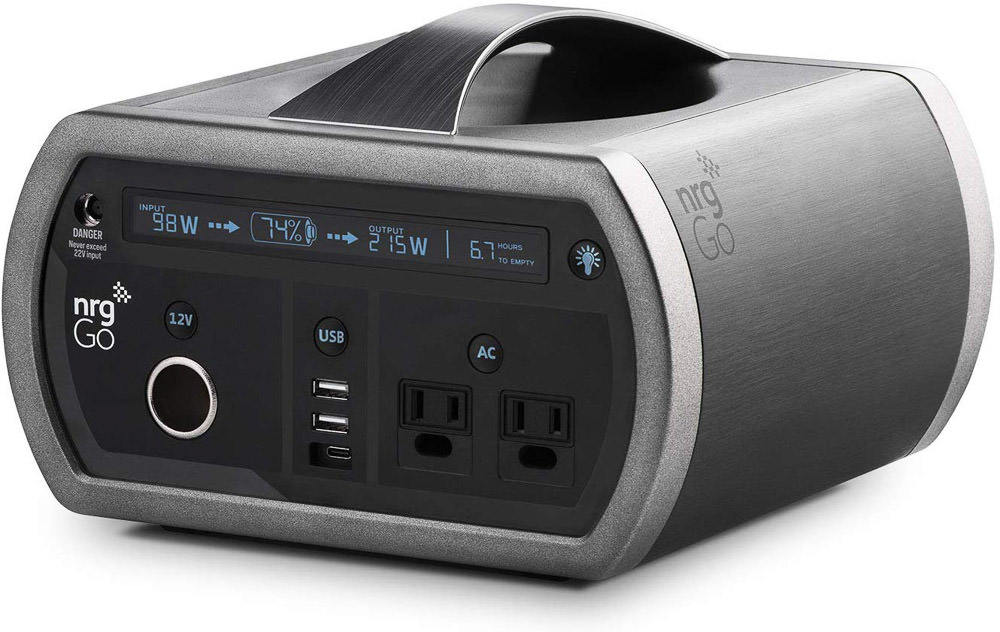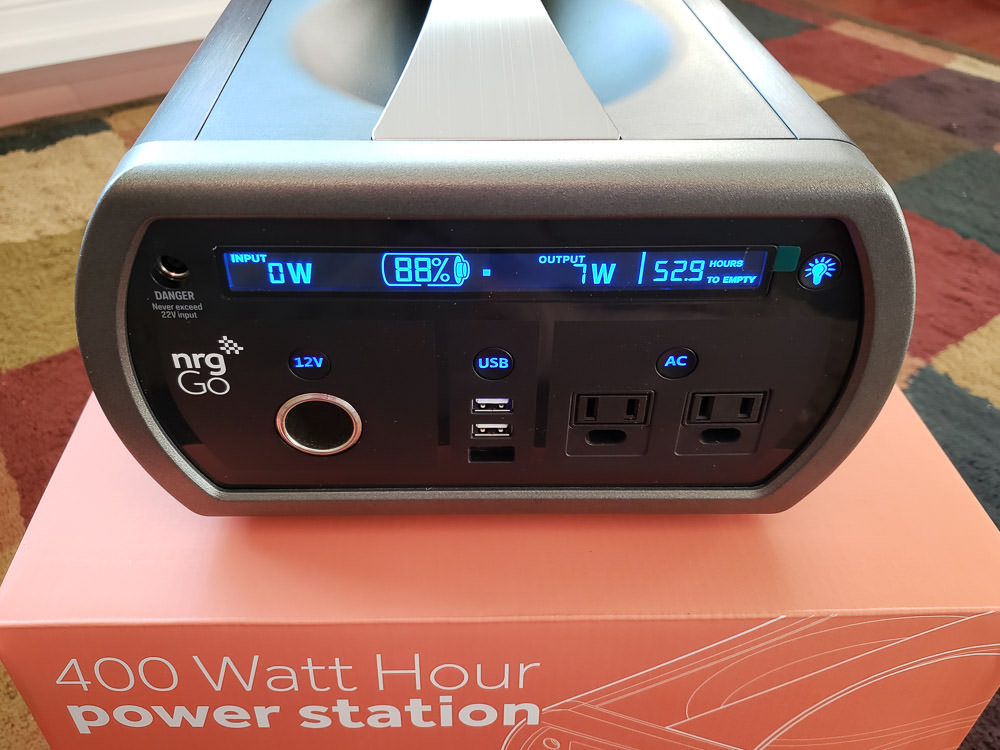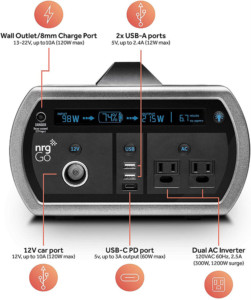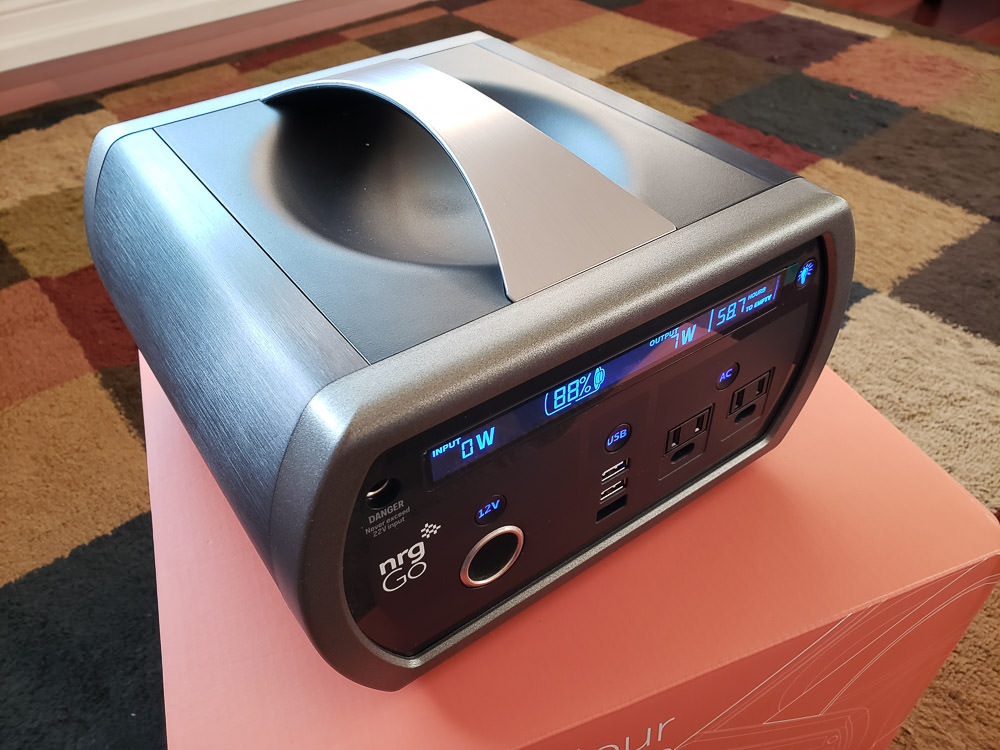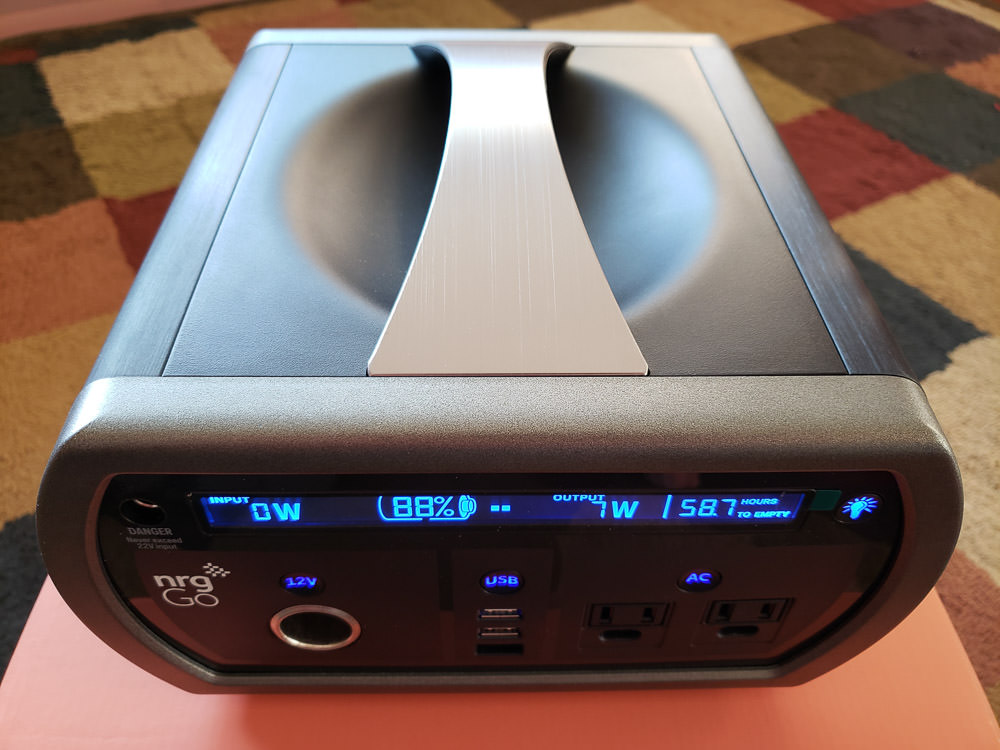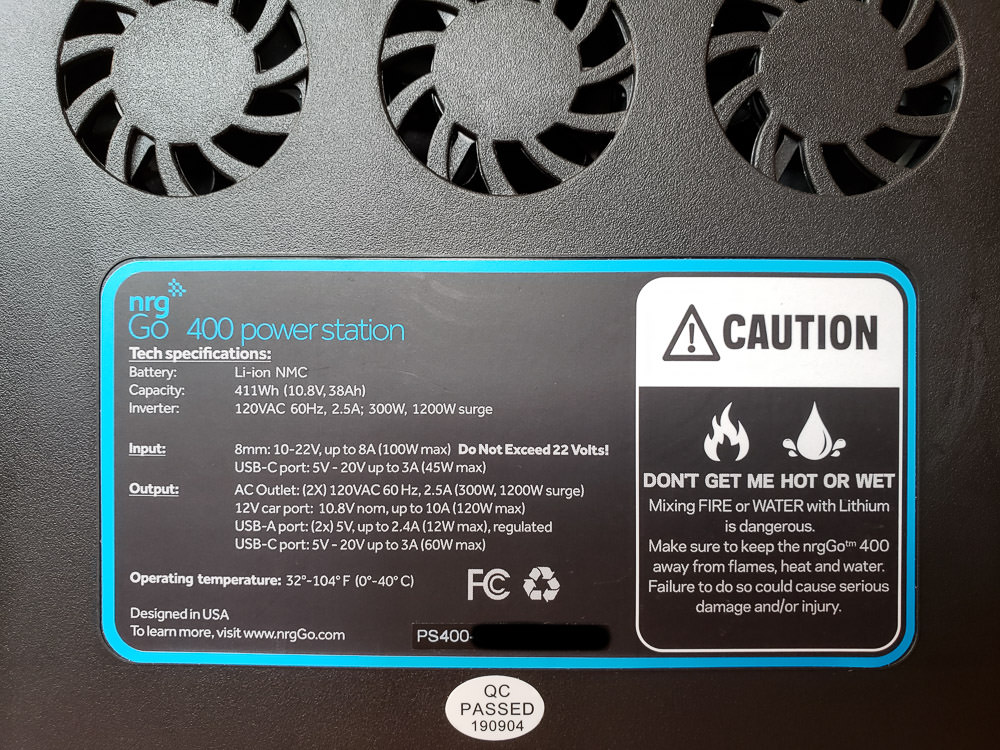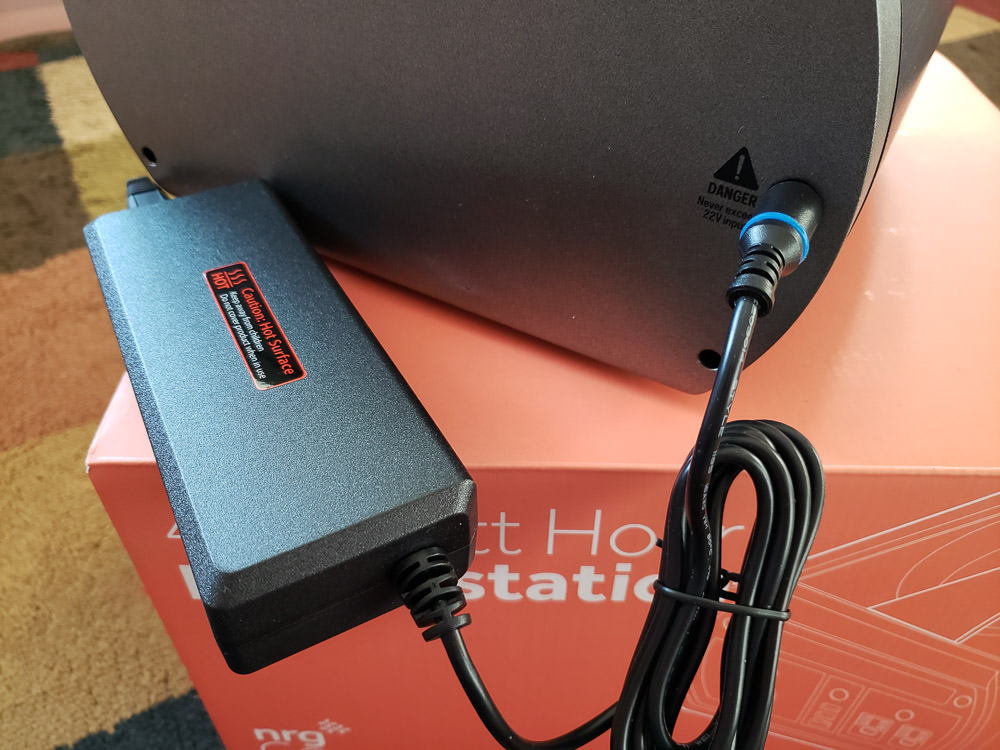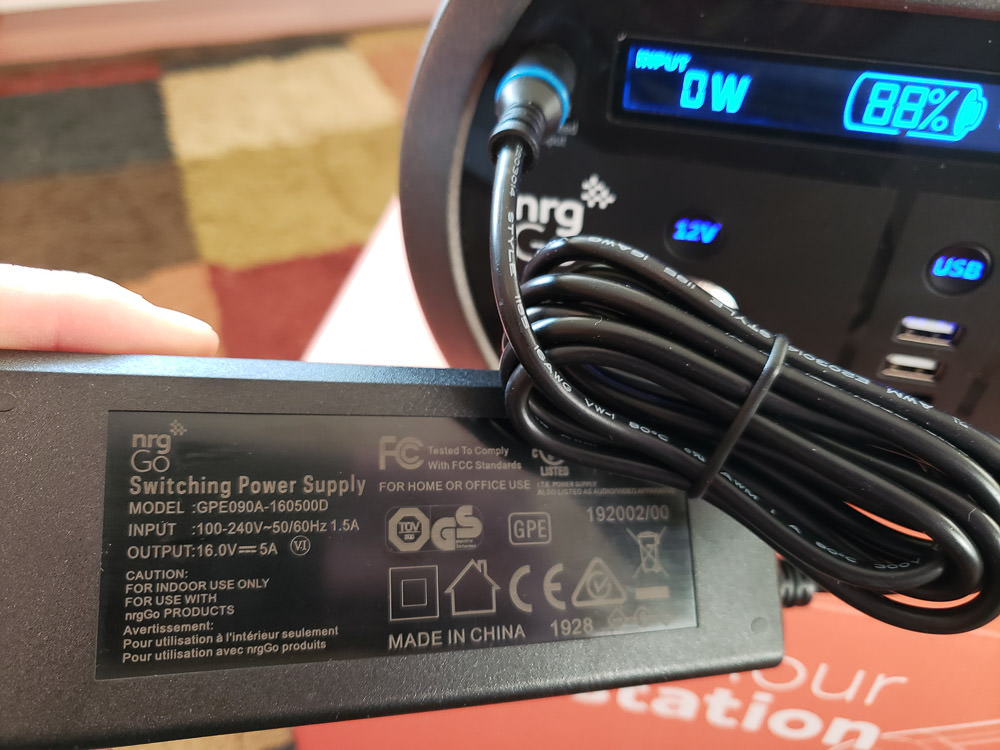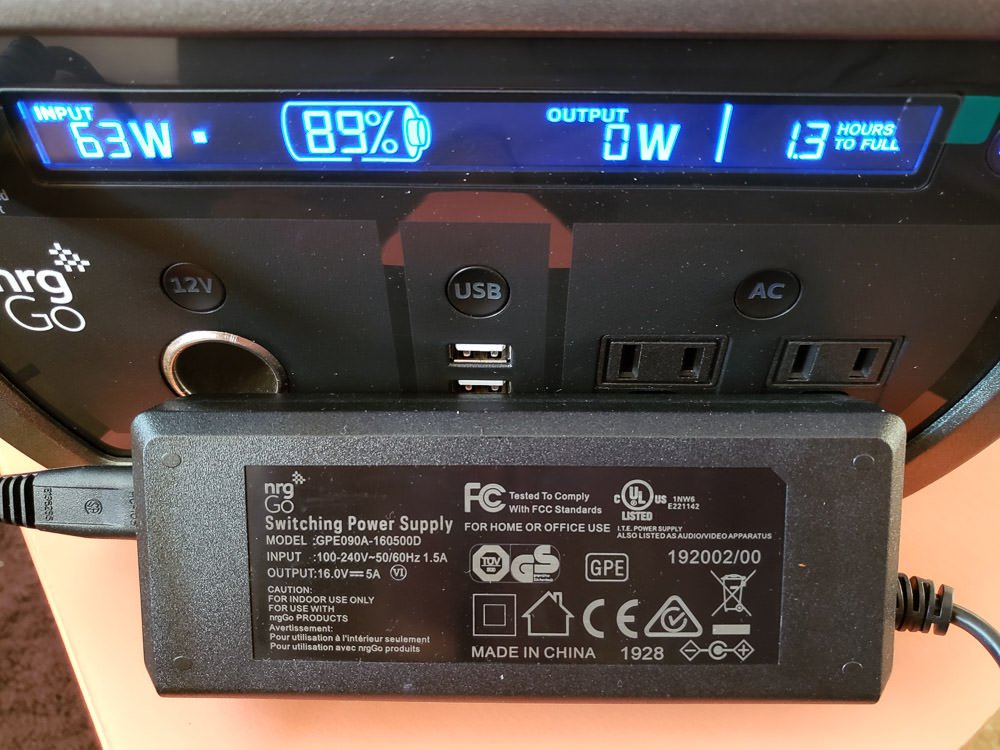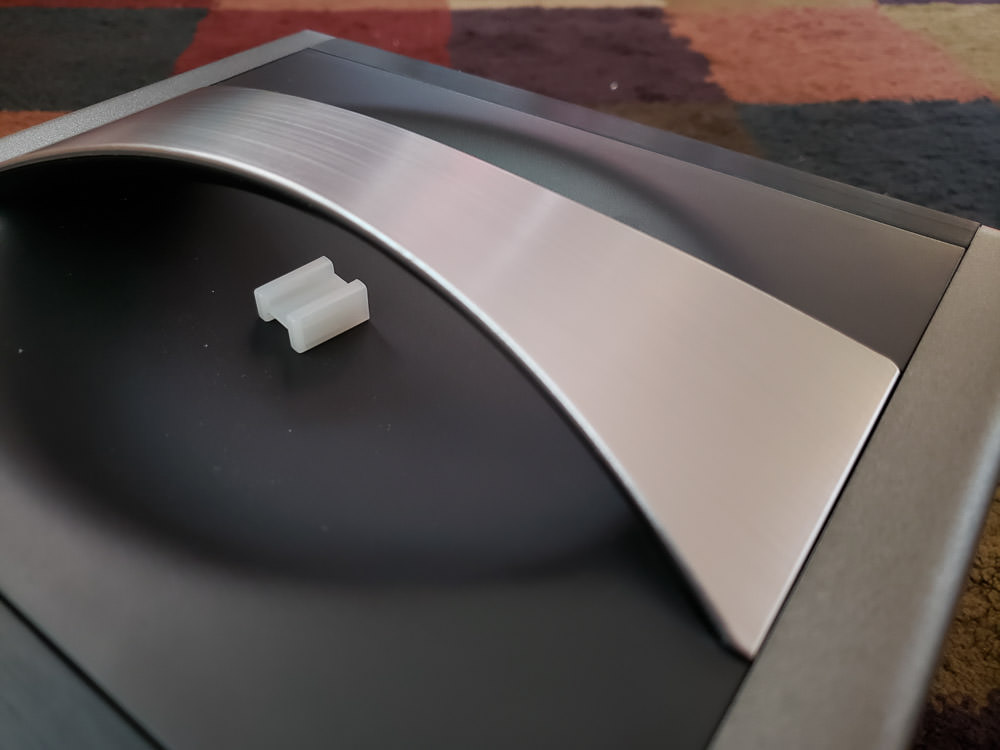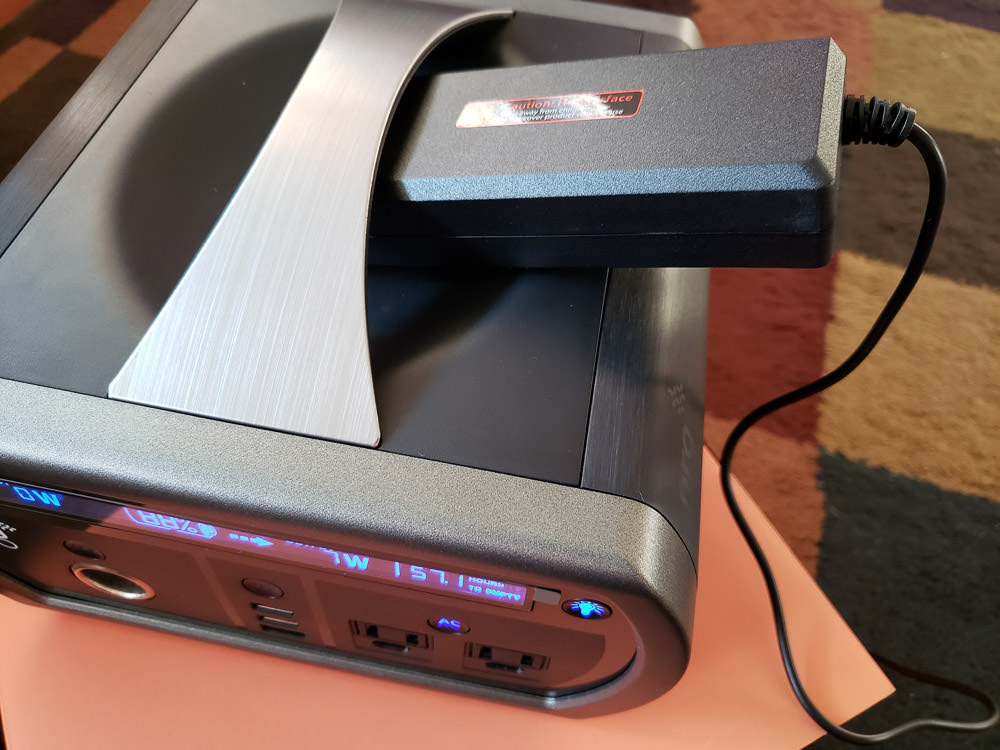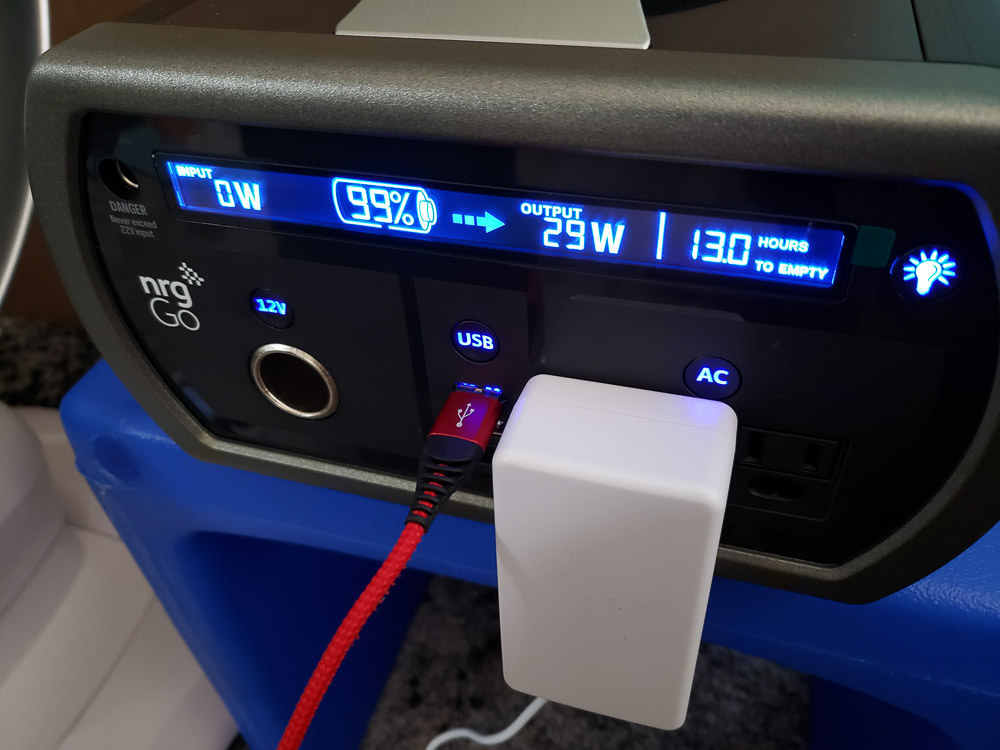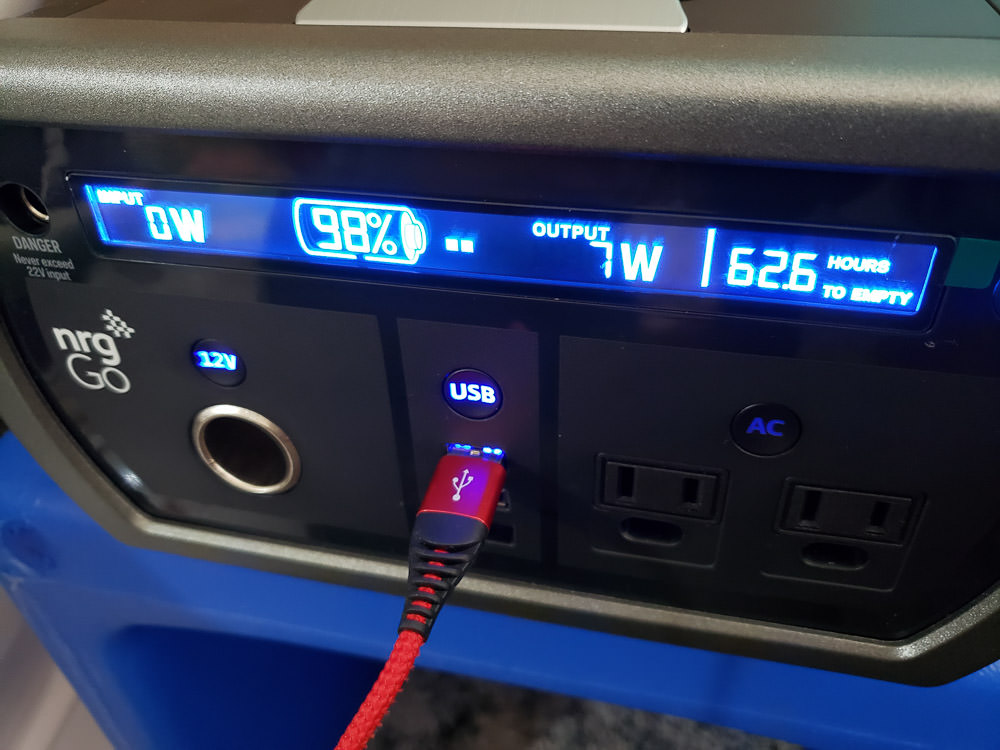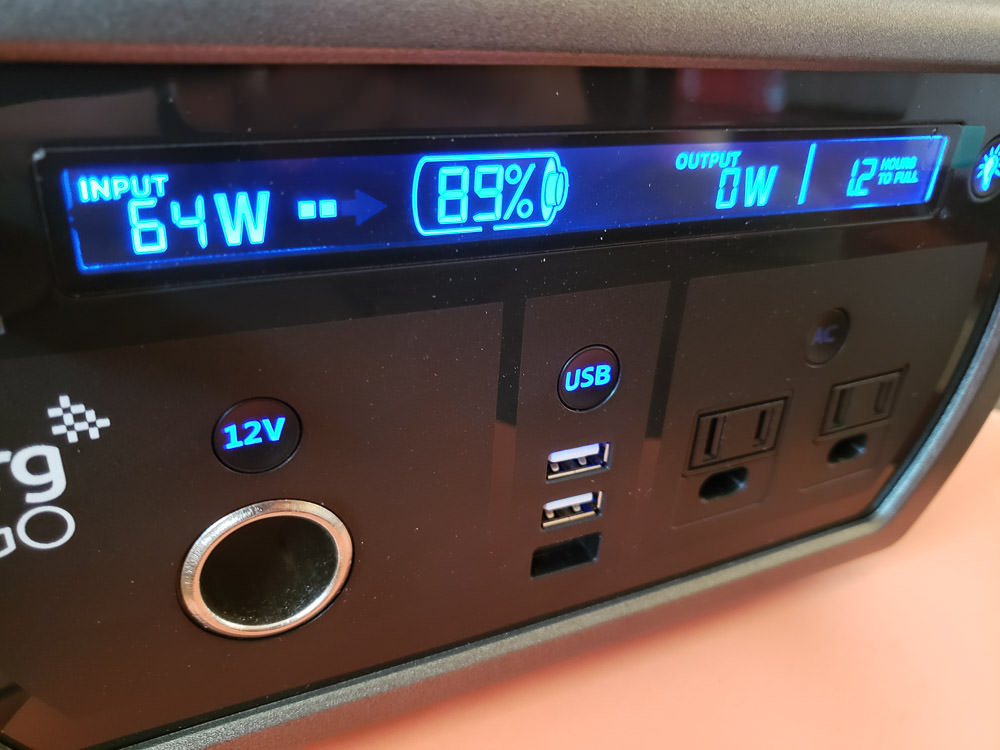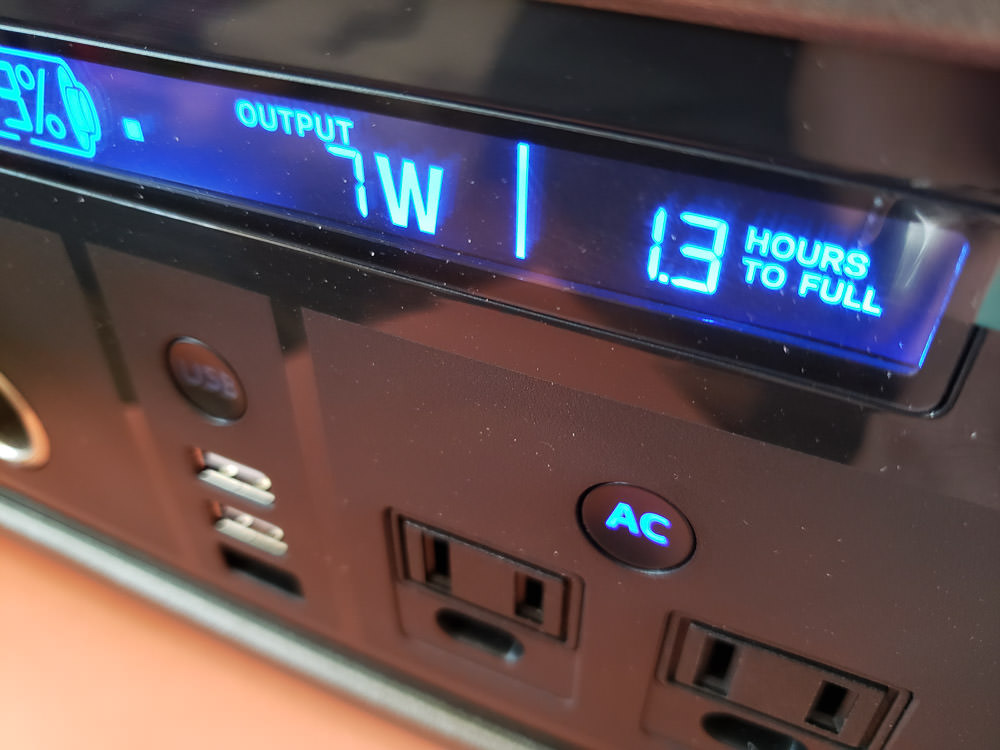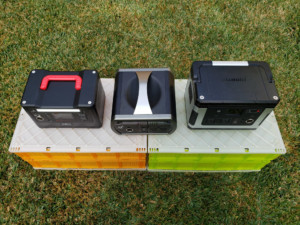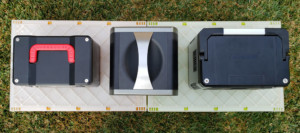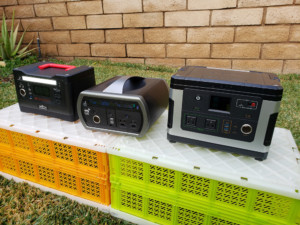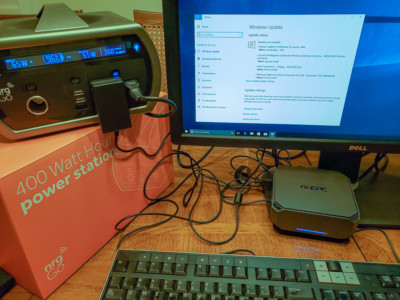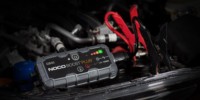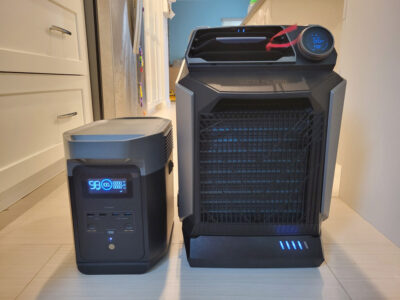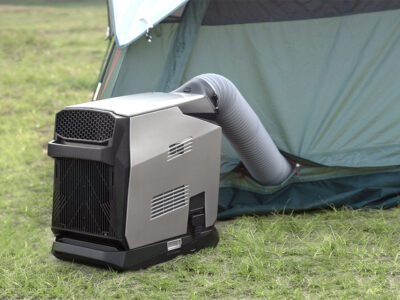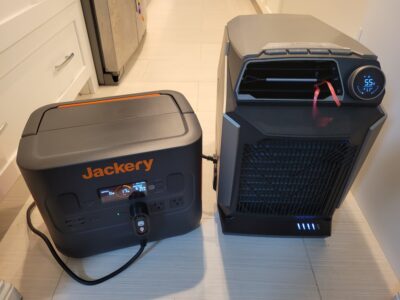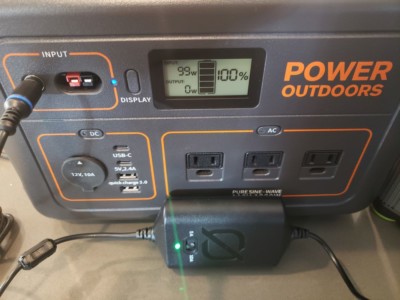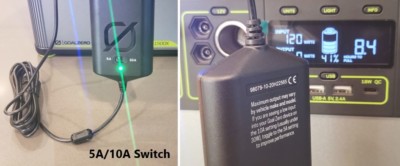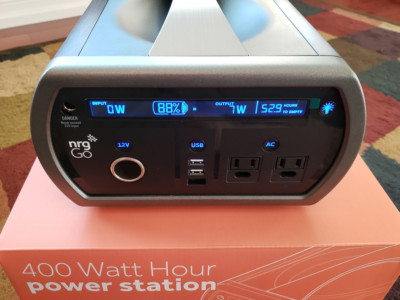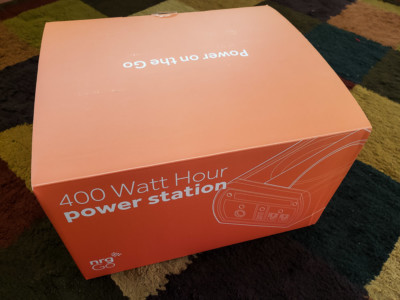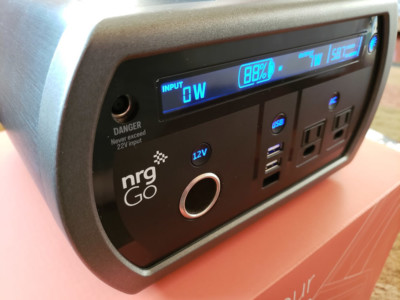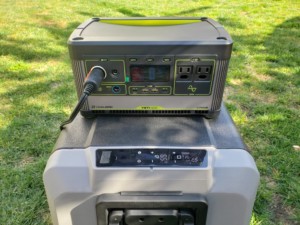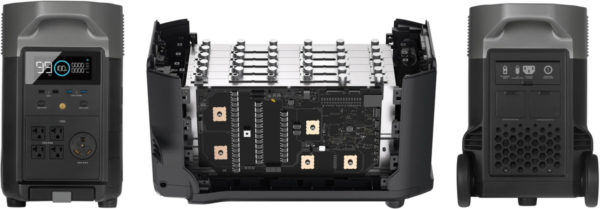Contents
Introduction
After having evaluated two solar charging-capable battery stations for my friends and I, the nrgGo 400 caught my attention recently. The logo looked vaguely familiar, and as it turns out, it is the first generator from US-based energy provider, NRG Energy (“NRG” on NYSE), a Fortune 500 company that provides power for homes and businesses to “approximately 3.7 million customers”. The device’s exterior certainly does not win any awards in my book: it is very muted, plain, and shall we say — somewhat ugly? I decided to go past the book’s cover and see what a company of that size came up with.
The two power stations I had previously reviewed were made by Chinese-based companies with batteries made in-house and not by well-known companies. So, safety became an immediate concern. Would a generator made by a US-based, ENERGY company with all the scrutiny and regulations of the U.S. government — at a lower cost than industry-leading Goal Zero — be worth looking into? How would it compare to the Suaoki G500 and Rockpals 500W that I previously wrote about?
Note: This review will be lengthier than usual as I would like to go over some battery technologies and how they relate to safety. I had recently done a lot of research on the topic to become a better-informed and safer user.
Why Portable Battery Stations?
I am an avid hiker, camper, and wilderness backpacker and also am one of those guys who has a bug-out bag packaged for emergencies.
There are times where I want to be able to bring the comforts of electricity with me to go camping or picnicking, and when there is an extended power loss in our home. This is when I started looking at portable generators to power lights, a mini fridge to keep our baby’s necessary items cool, and/or any medical devices. At first, I had bought a gas powered one, but did not appreciate its maintenance requirement (you have to use it from time to time or flush the fuel to keep sediments from destroying it), loud noise, and unhealthy fumes. Granted, with an endless supply of fuel, you could generate power virtually forever, but I would rather keep it as a secondary option.
Next, I looked into the Goal Zero Yeti 400 Lithium ($600) that delivers 428 watt-hours (Wh). It was quiet, virtually maintenance free, and solar chargeable, but the high cost and size made my wife and I balk. One of my friends has had a Suaoki 150 Wh generator, and even though he loves it, I wanted one with a much larger capacity. So, I had given their Lithium-based Suaoki G500 (500 Wh) battery a try and loved it. [Update 6/8/2021: We got rid of the Suaoki due to safety and quality control concerns. I, personally, would not buy a Suaoki battery again.] Later, I purchased the Rockpals 500W (540 Wh) while it was on sale and ended up liking it slightly more. The Suaoki went to my brother.
In A Nutshell
The nrgGo 400 is functionally an excellent, portable power station, though its muted, somewhat ugly, brushed exterior did not particularly catch my attention nor win any beauty awards. However, it makes up for it with some user-friendly features, uses Tier 1 LG battery cells made by one of the top manufacturers in the World, and is designed by a US-based, Fortune 500 energy company that is in the business of providing power to millions of customers in the consumer and enterprise space. With a backing like that, I feel quite confident in the safety and quality of this product. It is perhaps on par with industry-leading Goal Zero, but at a much lower price point. Originally, I had considered giving this product a lower rating, but the safety features and battery cell quality considerably nudged the Design score higher.
Tip: A battery power station like this one cannot be used to jump start a car. Instead, I suggest getting a small, portable one specifically made for that, such as my favorite: NOCO Genius Boost Car Jump Starter (Lithium Battery).
What’s Good? What’s Bad?
Pros
- Lithium-ion cells are made by LG, a top-notch, Tier 1 battery manufacturer
- Backed by a Fortune 500, US-based company whose focus is on energy and power on the go
- Very well-priced at $399 at the time of this writing
- At 411 Wh, it nearly matches the Yeti 400 Lithium’s 428 Wh capacity
- Capacity to power a 30″ LCD monitor and Mini PC for 4-6 hours
- That is roughly 38,000 mAh capacity at 10.8V or 114,000 mAh at 3.6V
- Rockpals is 50,000 mAh capacity at 11.1V or a whopping 150,000 mAh at 3.7V
- Suaoki’s is 45,900 mAh capacity at 11.1V and 137,700 mAh at 3.7V
- Can power AC and DC (USB/12V Car adapter) at the same time (as long as they draw less than 300W combined)
- Laptop, tablet, phones, lights, fans, CPAP medical device, projector, TV, mini refrigerator, speaker, camera, DSLR battery charger, and SOME rice cookers
- Can be used while charging
- Excellent, informative LCD with LED backlight
- How much total power is coming in (via solar panel or AC adapter)
- How much capacity is left (as a percentage)
- How much total power (AC and DC combined) is being used
- Suaoki displays the Wattage separately for DC and AC, which I prefer
- Estimated hours
- When Input > Output, shows estimated time to full capacity
- When Output > Input, shows estimated time to empty
- Like the Suaoki, the LCD panel can be visible without turning on the LED backlight
- Bowl-shaped top makes it convenient to temporarily store small items
- Input ports
- 1x USB-C (5-20V, max 3A, max 45W)
- 2x 8mm (found at front and back)
- Max 13-22V and 10A with no minimum wattage
- WARNING: Do NOT use a power source/solar panel that exceeds 22V or 10A!
- Be mindful that solar panels that are daisy chained may output more than 22V combined!
- WARNING: Do NOT use a power source/solar panel that exceeds 22V or 10A!
- Can be used for solar charging
- MPPT charge controller is built in
- Accepts up to 120W
- I recommend using a panel that’s between 30W – 120W at 18V (with the right Amps to equal 120W)
- If you attach a 220W solar panel (with 22V x 10A = 220W), it will charge at only 120W
- Suaoki G500 accepts up to 150W solar panels. Rockpals 500W up to 200W
- I tested solar charging with Rockpals 80W using Rockpals’ included 8mm adapter
- On a bright, cloud-free, California WINTER day, the Rockpals provided an excellent 38-56W of charging (efficiency is always lost during solar conversion)
- The same panel had output 50-65W in the Fall season a couple months ago
- Do not daisy-chain solar panels in sequence/series as that can add voltage along the way
- nrgGo recommends using their MC4 Branch Connector cable to connect the panels in parallel, keeping the voltage at a safe level (at or below 22V)
- Can be used with the Goal Zero 12V Car Charger (Goal Zero/Amazon)
- 60W @ 6-7 hrs (5A setting) / 120W @ 3.5 hrs (10A setting, if car supports it)
- Most other manufacturers only charge up to 60W. So, 120W with the Goal Zero is game-changing for me and comes highly recommended
- Max 13-22V and 10A with no minimum wattage
- Output ports
- 2x AC with 3 prongs (120V)
- Inverter can handle a continuous 300W, peaking at a crazy 1200W!
- See the TIPS section below for an explanation of what all this means
- Goal Zero Yeti 400 Lithium is the same
- Suaoki provides 300W with 600W peak. Rockpals does 500W with 1000W peak
- Pure Sine Wave Inverter
- Ensures clean power to protect against damage to sensitive electronics
- Generates less heat
- My hobbyist coworker confirmed that this device generates a Pure Sine Wave. Some manufacturers claim to be this but actually use Modified or Square Waves
- Inverter can handle a continuous 300W, peaking at a crazy 1200W!
- 1x Cigarette socket (10.8V, max 10A, max 120W)
- 2x USB-A (5V, max 2.4A, max 12W)
- 1x USB-C (5-20V, max 3A, max 60W)
- 2x AC with 3 prongs (120V)
- Charge Times
- Wall charger: 7-8 hours
- 150W solar panel: 5-12 hours, depending on weather conditions
- See TIPS section below to calculate solar panel charging time
- nrgGo’s website listed: “Max Solar Input: 4 hrs“. This confused me. Did this mean that solar panels could only be used for 4 hours before the nrgGo would stop accepting additional solar power?
- When asked, technical support clarified that it simply means that at “maximum solar input” wattage (120W) through the 8mm port, the batteries would be fully charged in 4 hours
- Built-in overload, overcharge (automatically stops charging when the device is full), and short-circuit protection
- LCD Display tells you what the error is instead of a cryptic code (ie. “Overload”)
- Rockpals will just blink “AC”, “DC”, or “USB” without telling you what the issue is
- Suaoki displays just an error code (such as “E 14”, meaning: AC output was overloaded)
- Multiple fans to keep the station’s temperature safe
- LCD Display tells you what the error is instead of a cryptic code (ie. “Overload”)
- VERY compact at 9.25″ x 6.5″ x 9.7″
- Rockpals: 10.24″ x 6.7″ x 6.82″
- Suaoki: 11″ x 7.5″ x 8.3″
- Goal Zero: 10.2″ x 8″ x 8″
- Portable at 12.13 lbs (Rockpals is the same, Suaoki is 22 lbs, Goal Zero is 16 lbs)
- Technical support was excellent in answering all my questions
- Muted, brushed look may be appealing to some, but not for me
- 1 year warranty + 1 more year with registration
- Suaoki provides 2 years, Rockpals is 1 year + 6 months with registration
- Very well-written manual, though some details are missing
Cons
- Muted, brushed look
- I prefer the industrial look of the Goal Zero and Suaoki, but also Rockpals’ professional, yet fun vibe
- Bowl-shaped top makes it convenient to temporarily store small items, but is severely hampered by the permanently attached (but sturdy) carry handle that cannot be stowed away (so things can be stacked on top)
- Power buttons can be accidentally turned on/off through a single press (ie. while packing away your camping gear)
- Can lead to accidentally turning on/off the output during transport
- Suaoki requires you to hold the DC or AC button for 2 seconds before it turns on/off that output, helping to minimize accidental presses
- No automatic power off once no power is drawn/station has become idle
- You may unexpectedly find the generator fully drained when you need it
- When the AC port is turned on, it draws 7W of power even though nothing is connected to either AC plug
- According to nrgGo support, this is because the AC Inverter itself requires power to stay on
- Rockpals and Suaoki both do not show any power draw on their displays when their AC ports are turned on. So, I do not know if they are simply hiding it, or if nrgGo is being transparent
- If the AC port is accidentally left on, and assuming the station is fully charged (411 Wh capacity), a constant draw of 7W would fully drain the nrgGo within 49.9 hours
- Without having an automatic power off, this could result in you unexpectedly finding the station fully empty!
- According to nrgGo support, this is because the AC Inverter itself requires power to stay on
- No QuickCharge 3.0 USB output port
- Multiple fans turn on during high peak and can be too noisy for some
- Only the AC brick is included to charge the nrgGo with (100-240V, 50/60Hz 1.5A with Output of 16.0V, 5A)
- Other cables must be purchased separately, including:
- MC4-to-8mm
- 12V Car charger (ensure the other end is 8mm)
- MC4 Branch Connector (to connect multiple solar panels to the nrgGo)
- Other cables must be purchased separately, including:
- Li-ion NMC batteries have 500 lifetime charge cycles
- According to nrgGo, this unit can be charged up to 2000 cycles — about 1/4 of total capacity is lost every 500 cycle
- Battery cannot be replaced. This can lead to unnecessary landfill waste
- No built-in LED light bar like the Rockpals 500W
- Cannot be daisy-chained to other nrgGo 400’s to extend the battery capacity
- Some Goal Zero stations can be hooked up to other ones so power can be provided for an even longer time without needing to switch
- Not waterproof. Keep it away from water splashes, rain, and pool!
- Lithium and fire or water can cause serious damage or injury!
- At 411 Wh, it offers about 100 Wh less capacity than the Rockpals 500W and Suaoki G500, but the same as the Goal Zero Yeti 400 Lithium
- Unlike LiFePO4 batteries, NMC can operate only in temperatures between 32-104F (0-40C). Both are Lithium-ion chemistries
- According to nrgGo, its Battery Management System (BMS) prevents recharging past 113F and outputting power beyond 149F
- Battery slowly drains over time even when station is powered off
- nrgGo states a 1-1.5 year hold from a full charge before it is completely drained
- No master power off button to turn off ALL outputs at the same time
- You have to manually switch off each type: DC, AC, USB
- All 3 must be off before the entire unit itself is turned off
- Suaoki can power off both the DC and AC outputs through a single, master button
- No official or included carry bag
Usage
- To turn ON or OFF the Car, USB, or AC outputs, press the corresponding button
- Note: This single-press (without hold) can lead to accidentally turning on or off the power station. The Suaoki requires you to push a button for 2 seconds before it would switch the output on or off
- To reset an Error condition that’s shown on the LCD (ie. AC port is Overloaded), turn OFF the respective 12V, AC, or USB output, and back on
Tips
- Continuous vs Peak Output
- The nrgGo 400’s AC Inverter provides a continuous output of 300W with an impressive peak/surge of 1,200W
- AC Inverter: Component responsible for converting battery (DC) power into AC for use by microwaves, mini fridges, laptops, CPAPs, etc.
- Continuous Output: As long as a device (or combination of multiple ones) does not exceed 300W, it can be used
- Example: A TV that uses 100W can be used because it is less than 300W. You can add more devices as long as they do not exceed 300W combined
- Example: A vacuum I have uses 1,140W, and because it exceeds 300W, it cannot be used
- Peak/Surge: Almost every device temporarily draws more power when it is turned on. The highest amount it pulls during that time is the Peak/Surge. This nrgGo can accept up to a whopping 1,200W!
- Example: A TV that uses 200W (continuous) may temporarily suck up 700W (peak) when powered on. Because 700W is less than 1,200W (peak), this battery will allow the TV to turn on at that level for a few seconds before shutting it down as a safety precaution. However, after a few seconds, the TV only uses 200W (continuous) while staying on. Because it only draws 200W continuously, which is below the 300W limit, it can be used until the battery drains
- In contrast, Suaoki G500 provides 300W continuous output with a 600W peak
- Example: A TV that uses 200W (continuous) and surges to 700W when powered on would instantly be shut off by the Suaoki. Why? Even though the TV uses just 200W while already on, it cannot be used because the power-on surge of 700W exceeds the 600W limit
- The nrgGo 400’s AC Inverter provides a continuous output of 300W with an impressive peak/surge of 1,200W
Most devices power on at a higher (Peak) wattage than when they are already on (Continuous). Therefore, if its peak exceeds the power station’s max, it may not be able to start
- To calculate how much Wattage a device uses: Voltage x Amperage
- For example, if a vacuum is 120V and 9.5A, its Wattage is 1,140W (120 x 9.5)
- Since this power station can accept an impressive peak of 1,200W and sustained power of 300W, the vacuum cannot be used. In the video, however, you can see that the vacuum does turn on for a few seconds (1,140W < 1,200W) before being shut down (1,140W > 300W)
- Note: If a device draws more than 300W for an extended period of time, the power station will shut off as a safety precaution
- To calculate how long a device could be used for: 411 Wh x 0.85 / Device Wattage
- About 10-15% of power is lost during power conversion, which is normal for all power stations
- For example, if a device uses 60W, it could last up to about 5.82 hours (411 Wh x 0.85 / 60 W)
- The Amazon TV I have uses about 100W
- If this nrgGo is full at 411 Wh, this would result in about 3.7 hours of continued usage (411 x 0.9 / 100)
- Yes, you CAN watch TV for nearly 4 hours while camping, but please remember what is more important when you go outdoor: enjoy nature with your friends and family!
- To calculate how long a device would need to charge: 411 Wh / Device Wattage
- For example, if a device uses 60W, it would take 6.9 hours to charge (411 Wh / 60 W)
- To calculate how long the nrgGo 400 would need to charge via solar panel: 411 Wh / (Panel Wattage x [0.5 or 0.75])
- In a perfect lab environment, solar panels charge at the indicated wattage (ie. 150 W). Outdoors, expect to only receive 50-75% on a good, sunny day (ie. 75 W – 112 W)
- For example, if a solar panel is rated for 100W, it could take as fast as 5.48 hours [411 Wh / (100 W x 0.75)] to charge, depending on environmental conditions and the panel’s age
- Tip: Even if it is overcast, the panels will STILL collect solar energy. So, keep charging!
- Always make sure you test your devices with the power station before you depend on it
- For example, items that may not work include some rice cookers, 12V DC air pumps, coffee makers, and hair dryers. Use the above formula to calculate the device’s wattage
- Lithium-ion batteries are volatile
- To minimize fire damage to your belongings or loved ones, store the power station in the garage and not inside the house
- According to nrgGo, the power station can be stored in the car while camping during a hot, California summer. However, keep the following in mind:
- Keep the battery out of direct sunlight. I usually keep it on the floor of the car and perhaps crack open the windows a tiny bit
- Do not USE the station in the car if temperatures fall below or exceed nrgGo 400’s rated, operating temperature (32-104F or 0-40C)
- Charging with multiple Input ports
- There are two 8mm ports: at the front and back
- Only one will be allowed to receive power in order to prevent damage to the idle one
- According to nrgGo support, having both Inputs receive different Voltage levels could have one Input drive power to — and damage — the other
- USB-C port can receive power at the same time as the 8mm ports due to being on a separate charge control circuit
- There is no overload risk for concurrently using it with the 8mm port
- There are two 8mm ports: at the front and back
- If using a car charger, make SURE you only charge this station while the car is RUNNING. Otherwise, you’ll deplete your car’s battery and leave you stranded
- If charging with the solar panel, be sure to keep the station out of direct sunlight as it could overheat
- You should NOT charge the power station AND use it to power something else at the SAME time as it can damage the battery
- Either charge OR use it to power something else, but not both concurrently
- I received the following responses when I asked the manufacturers for their recommendation:
- nrgGo: nrgGo 400 can be used while charging
- Rockpals: Rockpals 500W can be used while charging
- Suaoki: Suaoki G500 should NOT be used while charging
- NEVER charge the power station itself in below freezing temperatures, or you will damage the Lithium-ion battery AND potentially limit its overall capacity
- However, you CAN use the station to power OTHER devices
- The power station has a low temp charging protection (manual does not state so, but confirmed with nrgGo support)
- nrgGo 400’s operating temperature range is 32-104F (0-40C)
- Suaoki G500 does AND starts charging again once the temp goes above 40F
- If you have to use the station in below freezing temperatures, keep the power station in an insulated cooler and connected to a power source (ie. solar panels). The heat generated by the battery will keep it running as best as it can
- A solar panel is NOT required to use this power station
- Turn off any output ports (AC/DC) that are not being used in order to conserve power
- Do not use this (or any power station) in a tightly enclosed area as the station can overheat
- If charging the station with the car charger, you cannot charge it to 100% capacity with a 12V outlet. If you have a 24V outlet, however, you could
- To prolong the battery lifetime while in storage, keep the station fully charged every 3-6 months
- Or, according to nrgGo support, keep it plugged in when not in use and discharge it to 50% every 3-4 months
- The charging controller automatically gets disabled once the batteries are full
- NOT using the battery for a very long time can actually hurt its lifetime
- There is no “memory effect” in this station’s battery
- Note: It is better to NOT let it completely drain before recharging
- The battery is NOT replaceable. Suaoki’s is not replaceable either, but some Goal Zero’s products are
- Or, according to nrgGo support, keep it plugged in when not in use and discharge it to 50% every 3-4 months
CAUTION: Lithium-ion (LiFePO4 and NMC) batteries do NOT like to remain discharged at 0% for prolonged periods of time. If you let your battery stay at 0% for too long, you may not be able to charge it again without specialized equipment.
Jump Start Car?
A battery power station like this one cannot be used to jump start a car. Instead, I suggest getting a small, portable one specifically made for that, such as my favorite: NOCO Genius Boost Car Jump Starter (Lithium Battery).
Portable Air Conditioner
The EcoFlow Wave is a portable air conditioner that accepts both AC and DC input. The company, of course, recommends using its own Delta power stations for better efficiency and longer runtime because they can draw directly from DC power. In a pinch, any battery or generator capable of providing the Wave-required input wattage could be used, but keep in mind that AC power loses some energy due to conversion to DC.
Goal Zero 12V Car Charger
I wanted to point out how GAME-CHANGING the Goal Zero 12V Car Charger is (Buy on Goal Zero/Amazon). The company inexplicably does not promote its benefits enough, but it can be used to charge batteries at a whopping 120W when the car port supports 10A (like my Toyota Sienna and Highlander did!) All other car chargers I have (Jackery, Rockpals, Paxcess) only go up to 60W, but the Goal Zero can double that! What does that mean? Faster charging while driving around town! I bought two — one for use with the Yeti 1500x and another with the Jackery Explorer 1000.
The Goal Zero 12V Car Charger can charge a supported Goal Zero, Jackery, Bluetti, or EcoFlow battery at a whopping 120W!
Final Thoughts
The nrgGo 400, like the Suaoki and Rockpals I previously reviewed, is an excellent item to have in my camping and emergency inventory. For those who suffer from power outages, these stations can be lifesavers, particularly for those who depend on medical devices to keep them comfortable or alive. I like using them during camping to power several small fans inside our tent during the hotter, windless, daytime temperatures and to provide lighting throughout the site.
The nrgGo is as portable and compact as the Rockpals 500W, has some nice usability touches like the Suaoki G500, but disappoints with how it looks and how the carry handle is in the way. I thoroughly appreciate the fact that it is made by a US-based, Fortune 500 energy company that provides power to millions of domestic customers (including enterprises). Add to that the knowledge that the batteries are made with Tier 1 LG cells, it commands a bit more of my trust in its safety over the other brands who may be using cells manufactured in-house or by unknown companies. It is perhaps on par with industry-leading Goal Zero, but at a much lower price point.
I hope that nrgGo will, with future versions, address the carry handle that is permanently affixed across the top, add an automatic idle power shut off, and produce power stations that have a more fun look with user-replaceable batteries to help minimize waste. I originally considered giving this product a lower score for those reasons, but the safety features and battery cell quality considerably nudged the Design score higher.
When asked about which one I would recommend between the nrgGo 400, Rockpals 500W, and Suaoki G500… I highly recommend all three [Update 2021: The Suaoki is no longer suggested] for the outdoor person and for emergencies. However, if purchasing a power station from a large, US-based company with know-how in energy, portable power, and safety is important to you, the nrgGo takes the trophy. If capacity and a much more fun design appeals to you, go with the Rockpals or Suaoki, though I gave a slight edge to the former for its smaller size and built-in LED light bar.
Where To Buy
- nrgGo 400 Power Station
- Goal Zero Yeti 400 Lithium Power Station
- Rockpals 80W Solar Panel – See our Review
Related Posts
- Power Generators: Gas vs Propane vs Battery Station (and Solar)
- Ultimate Reference: Power Station Comparison
- EcoFlow Wave Portable Air Conditioner
- Reviews
- Goal Zero vs Jackery: Yeti 1000 Core vs 1000X vs Explorer 1000
- Goal Zero Yeti 1500x / Yeti 1000x / Yeti 500x
- Jackery Explorer 2000 Pro / Explorer 1000 / Explorer 300
- EcoFlow Delta Pro LiFePO4
- Bluetti EB70S LiFePO4
- BigBlue Cellpowa500 LiFePO4
- Rockpals 500W
- Quick Look
- Announcements
Other Useful Topics
Power Station Comparison
Check it out!
Ultimate Reference: Power Station Comparison – We summarized the specifications of many of the power stations we had come across or reviewed all in one place.
Gas/Propane Generators vs Battery Power Stations
In July 2020, I wrote about this topic after many asked what their differences were. In short, gas/propane generators can run virtually forever but are loud, dirty, and potentially quite dangerous. Battery power stations, on the other hand, are more portable, silent, less volatile, and can be operated indoor, but depend on external power (like solar) to recharge. Where gas/propane are used to GENERATE electricity, batteries STORE them for later use. Personally, I am a fan of the latter because they are so easy to carry around and are safer to use.
Battery Technology and Safety
Goal Zero debuted with Lead-Acid batteries that were bulky and heavy. Today’s devices use Lithium-ion — commonly Nickel Manganese Cobalt (NCM) or Lithium Iron Phosphate (LiFePO4 / LFP) chemistries — for more power in a smaller, lighter package. NMC, however, is more volatile than LiFePO4 and becomes riskier as more cells are packed together. Goal Zero and Jackery used NMC for some time whereas EcoFlow and Bluetti use LiFePO4. Jackery launched its first LiFePO4 model in mid-June 2023 and Goal Zero in October that year.
- How much energy a battery can store is measured in Wh (Watt-hours), and how much power is used or produced in W (Watts)
- The higher the Watt-hour (Wh) capacity rating, the more dangerous the battery could become if not handled right
The quality of the battery cells and the BMS (Battery Management System) are crucial for safety.
Cell Manufacturers
Battery cells made by LG and Sony are among the best in the hobbyist world as are Sanyo/Panasonic and Samsung. Goal Zero uses LG. Jackery also uses LG or BAK (a leading Chinese brand). EcoFlow makes its own. During my years of research, I found that use of lower-quality batteries could pose a serious risk to life and property and should become a crucial part in deciding what to buy.
Safety
The second part in a battery’s safe operation depends heavily on the design and BMS (Battery Management System). Some BMS manufacturers, unfortunately, overstate their capabilities that could lead to catastrophic failure.
- Design should allow for proper, thermal cooling, use quality components, and obtain proper certifications
- Batteries made by known manufacturers are less likely to fail
- BMS should sufficiently restrict the battery from going past its capabilities
Li-ion: LiFePO4 vs NMC
There had been a lot of debate over whether Nickel Manganese Cobalt (NMC) or Lithium Iron Phosphate (LiFePO4) was better. Both are Lithium-ion batteries. Goal Zero, Jackery, and most of today’s power station manufacturers use NMC, but why do EcoFlow and Bluetti use LiFePO4 when they are bulkier and heavier? There are important distinctions, but the best battery is the one that meets all or most of your unique needs.
Charge Cycles
One of the most significant differences — and buying factors — is the charge cycle count for both battery chemistries. It measures how long the battery can be used for before it must be replaced or thrown away. LiFePO4’s count is as high as 4,000 cycles (as of 2023) whereas NMC is 500+. However, both have a useful life that can range between 3,000 – 5,000 cycles (even as much as 7,000 with proper care). But how does the count determine longevity?
Let’s look at Li-ion NMC as an example. It loses about 20-25% of total capacity after every 500 charge cycle. That means after the first 500 cycles, the battery drops 20% from when it was new, then another 20% after the next 500 cycles, and 20% again after that one. It would take roughly 1,500 charging cycles to have the battery last only half as long as when it was brand-new. Thus, it should be usable for 2,000+ cycles or about 6-10 years. Li-ion LiFePO4 can last longer.
CAUTION: Lithium-ion (LiFePO4 and NMC) batteries do NOT like to remain discharged at 0% for prolonged periods of time. If you let your battery stay at 0% for too long, you may not be able to charge it again without specialized equipment. Keep them at between 20-80% while in storage to maximize their lifetime.
LiFePO4 Advantages
- Safer, less volatile, and thus cheaper to manufacture
- Higher charge cycle: 1500-2000 (10+ years). NMC: 500+ (6-10 years)
- Usable in more extreme temperatures (-4F/-20C to 176F/80C). NMC: only 140F/60C max
- Holds 350-day charge. NMC: 300
NMC Advantages
- Smaller and lighter. Allows for more portable products
- Faster charging

